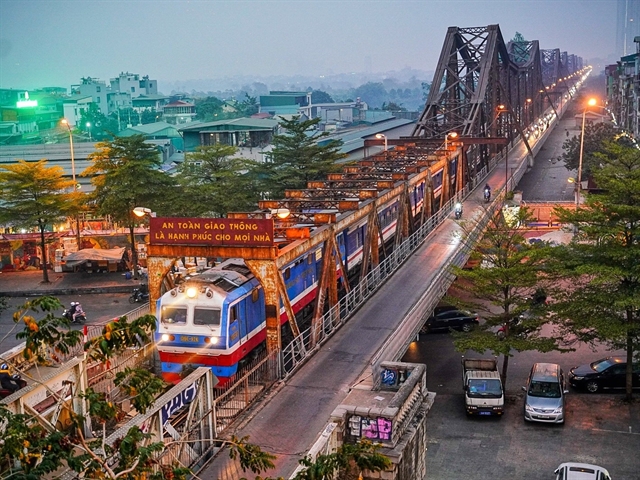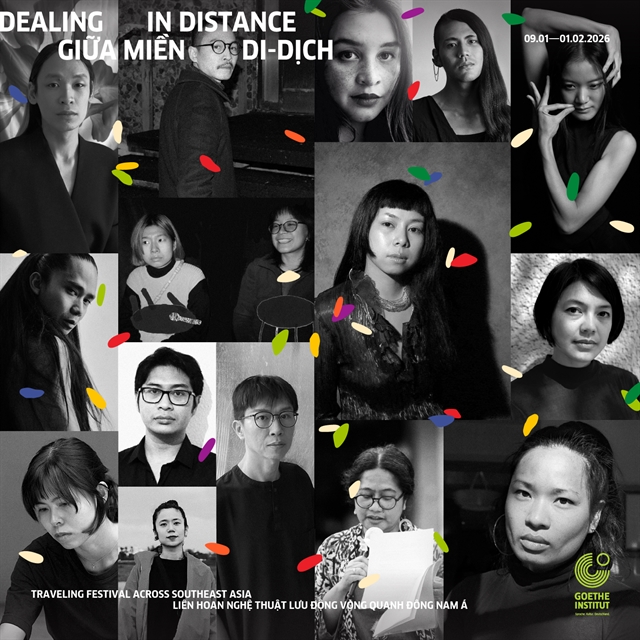 Travel
Travel

In the central province of Phú Yên, tourists rarely ignore Xuân Đài Bay with its unique islet – Nhất Tự Sơn – which is shaped like the old calligraphy style word for one - một.
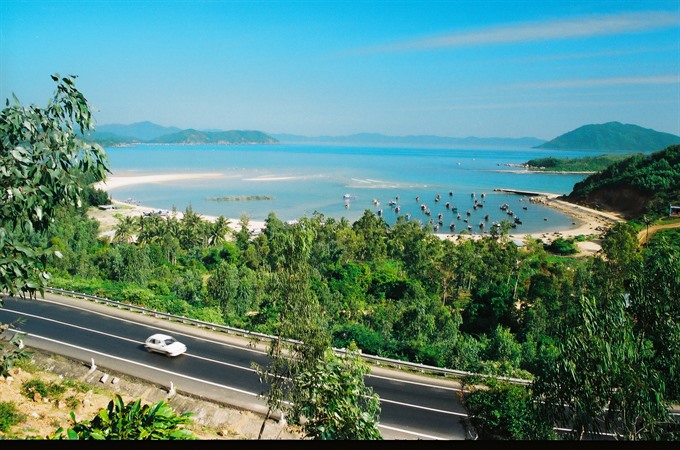 |
| Overview: Xuân Đài Bay. —VNS Photo Lê Hương |
By Lê Hương
In the central province of Phú Yên, tourists rarely ignore Xuân Đài Bay with its unique islet – Nhất Tự Sơn – which is shaped like the old calligraphy style word for one - một.
With a total area of 6ha, the two-kilometre-long islet and its hills act like a feng-shui screen preventing waves and wind from reaching the nearby fishing villages of Mỹ Hải and Mỹ Thành.
Another unique feature of the little isle is that it is linked to the mainland less than one kilometre away by a gravel road just beneath the surface of the sea on which locals and tourists can walk. The hidden pathway only emerges at certain low tides.
 |
| Hidden road: Walking on a road hidden by water to Nhất Tự Sơn Island. — VNS Photo Lê Hương |
Nguyễn Hải Sơn, a local fisherman, said that in the first half of each lunar month, the water was lower in the afternoon while in the rest of lunar month, the tide was low in the morning.
I was walking to the island in the middle of the day when the road was under water, but I felt safe and, as I found out, this was the best time to take photos.
From the islet, one can see villages on poles that raise lobsters. Together with nearby Sông Cầu Town and Cù Mông Lagoon, the bay offers the best seafood in the province.
Though the islet is not as spectacular as Điệp Sơn Island in central Khánh Hòa Province, its beautiful natural landscape and kind-hearted people are another attraction.
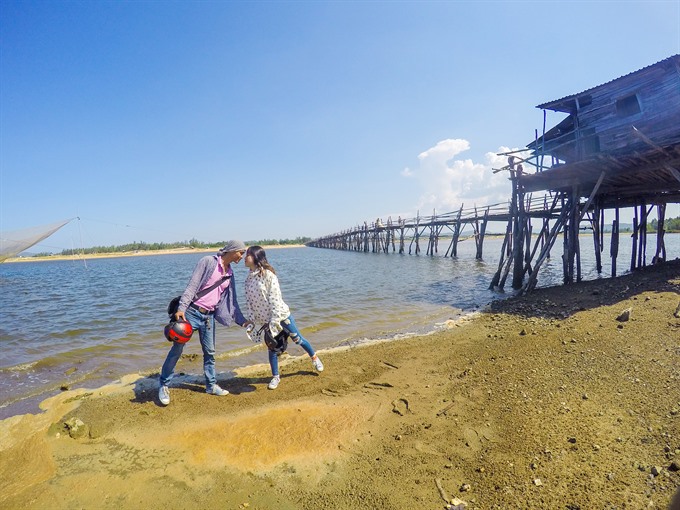 |
| Posing: Couple pose by one of the rickety bridges in the area. — Photo newsthoidai.vn |
Legendary bridge
Phú Yên Province has many small bays running along the coast. It has a complicated geographical outline that creates lagoons mingling with the land, making it difficult for road traffic. This forces locals to make temporary bridges for daily use.
Ông Cọp Bridge (or Bình Thạnh Bridge) is one among hundreds of such bridges in the area. It is the longest in Việt Nam made of wood and bamboo.
The bridge links villages in the north of An Ninh Tây Commune (Tuy An District) with Sông Cầu Town.
From National Road 1A, turn right and keep going about 100m towards the sea. There, one will find a thin 400-metre-long bridge spanning the Bình Bá River, which flows to Tiên Châu Port. The fragile bridge is an important route crossing over immense waters that flow to Ô Loan Lagoon.
To save time, many backpackers choose to drive motorbikes across the bridge to reach Ghềnh Đá Dĩa and other localities in the province instead of going along the National Road.
A local villager told me that the bridge is destroyed every year by flood water but is soon re-built.
The slim bridge in the middle of an immense water area is an idyllic scene very important to local traffic.
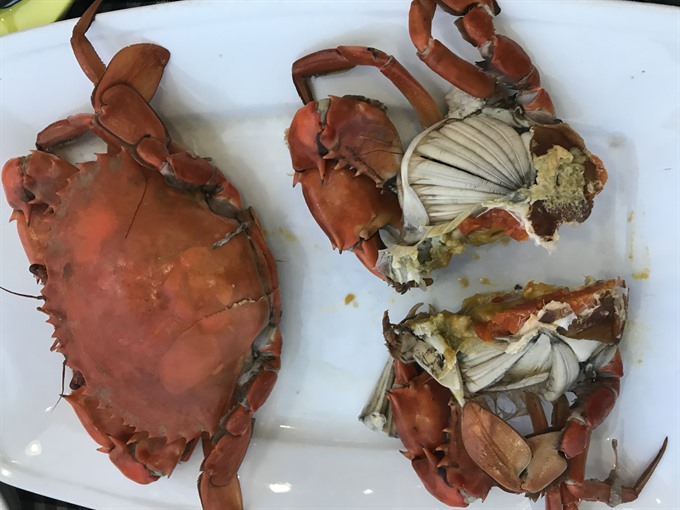 |
| Time for a feed: Crabs are highly recommended by the locals at Cù Mông Lagoon. — VNS Photo Lê Hương |
Floating meals
Cù Mông is the name of a mountain range in the northeast of Phú Yên Province. It is also the name of a pass through the mountain and a lagoon at its foot. The lagoon is famous for its fish and other seafood. An old saying goes:
“Cá ngon là cá Cù Mông
Gạo ngon là gạo ở đồng Phú Dương.”
(Good fish are from Cù Mông Lagoon,
Good rice is from Phú Dương Field.)
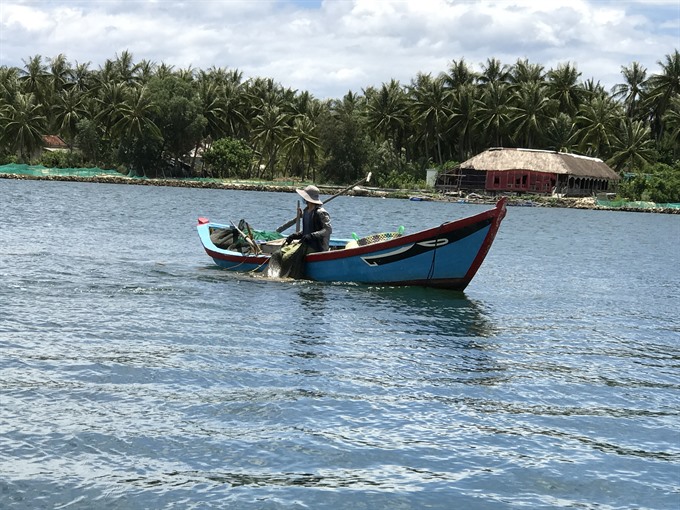 |
| Steady work: Tourists can enjoy a tranquil scene of fishermen working on boats. — VNS Photo Lê Hương |
Phú Dương field is at the foot of Cù Mông Mountain range, 12km north of Sông Cầu Town.
Cù Mông is actually a small sea bay with a total square of 26sq.km. It is bordered by Cù Mông Mountain, which runs into the sea.
Driving along the lagoon, tourists will find floating cages raising lobsters, sea horses and oysters, which all bring high profits.
Taking a meal at a floating restaurant in the area is relaxing. While enjoying local fresh sea food cooked in traditional way, tourists can admire the serene beauty of a peaceful village under the shadow of coconut trees. — VNS

